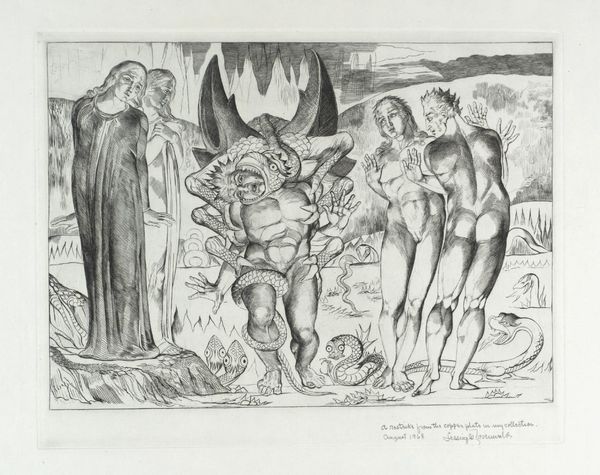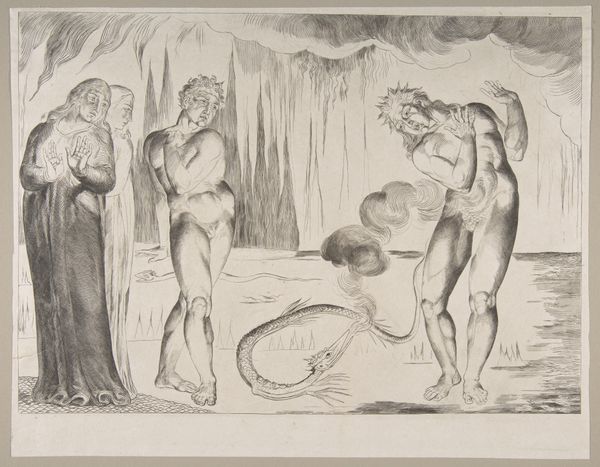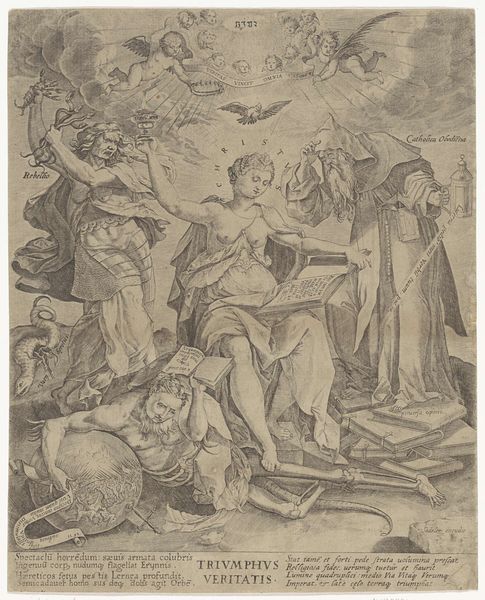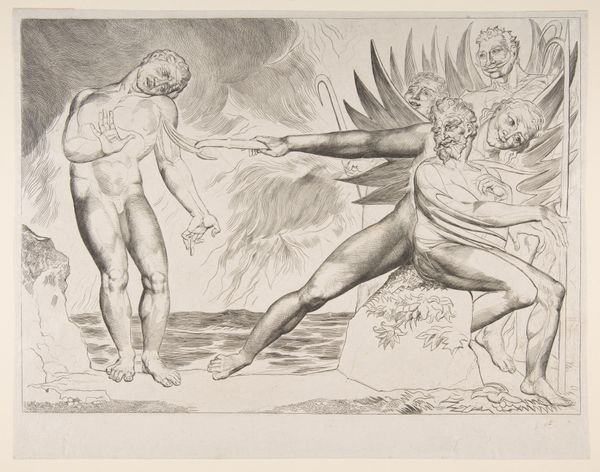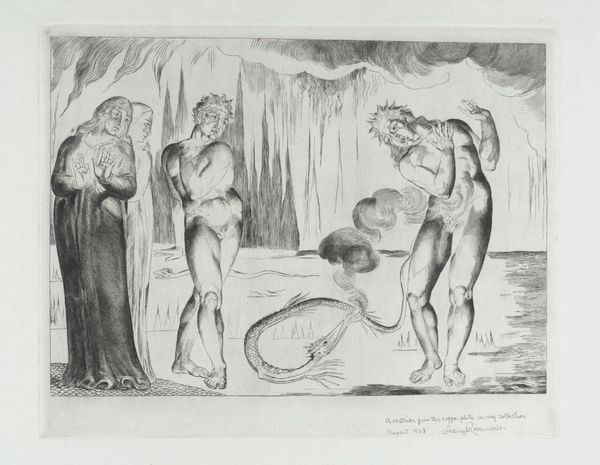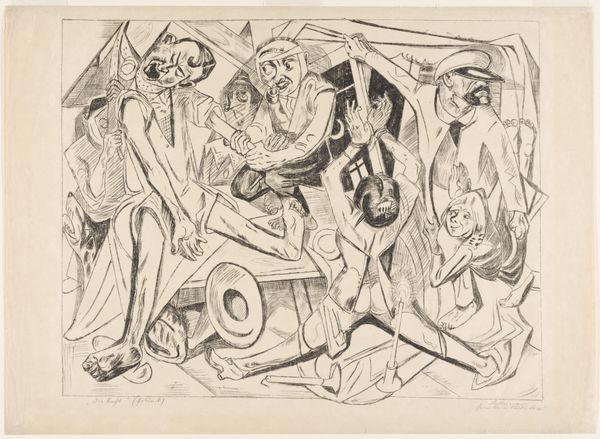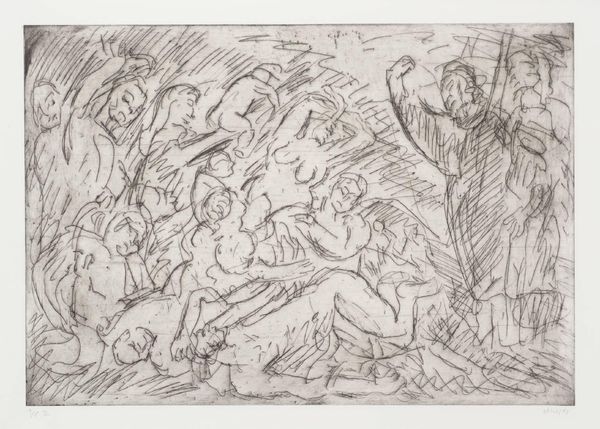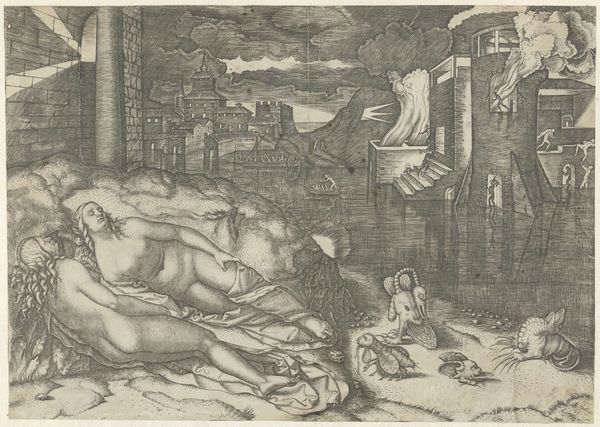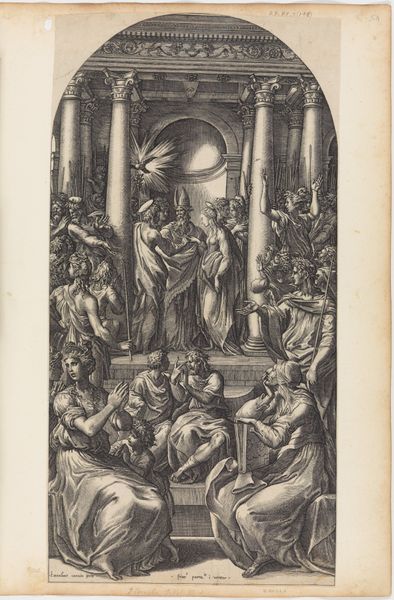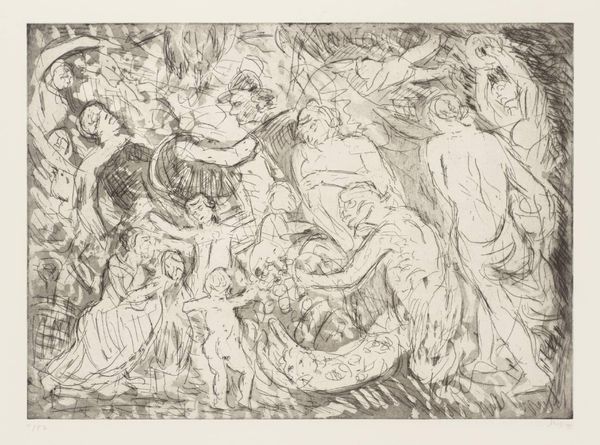
Circle of Theives: Agnello Brunelleschi Attacked By a Six-Footed Serpent 1820 - 1832
0:00
0:00
drawing, print, engraving
#
drawing
#
narrative-art
# print
#
figuration
#
romanticism
#
history-painting
#
engraving
Dimensions: plate: 9 1/2 x 13 5/16 in. (24.1 x 33.8 cm) sheet: 10 1/16 x 13 5/8 in. (25.6 x 34.6 cm)
Copyright: Public Domain
William Blake made this engraving on a copper plate sometime between 1826 and 1827. In this print, Blake illustrates a scene from Dante's Inferno, using the relatively humble medium of etching. Blake was deeply invested in technique. He even claimed to have invented a new form of etching, though this was likely a fiction. In any case, the look of his prints, with their sinuous lines and strong contrasts, comes from the way he worked the metal. The acid bites into the plate, leaving recessed lines that hold ink. This gives the image a tactile quality, as if it were sculpted in relief. Blake's choice of etching aligns with his radical politics. Unlike painting, which was associated with wealthy patrons and grand institutions, printmaking was a more democratic medium, accessible to a wider audience. Blake used it to circulate his visionary ideas, challenging the established order and celebrating the power of imagination. For Blake, the very act of making was a form of resistance, a way to create a new world, one impression at a time.
Comments
No comments
Be the first to comment and join the conversation on the ultimate creative platform.
